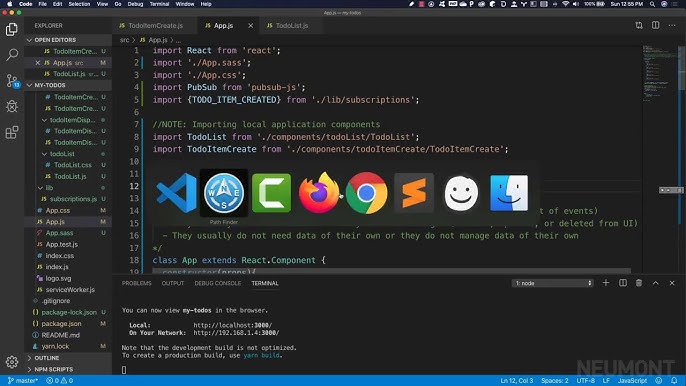Whether you’re a seasoned software architect or just starting your coding journey, one universal truth binds all developers: bugs are an inevitable part of the process. The act of finding and fixing these defects, known as debugging, is as much an art as it is a science. It’s a critical skill that separates proficient developers from the rest, transforming frustrating roadblocks into moments of profound learning and insight. While the simple `print` statement has its place, modern software development demands a far more sophisticated toolkit and mindset to tackle the complexities of today’s applications.
This comprehensive guide will take you beyond the basics, exploring a full spectrum of Software Debugging principles and practices. We will delve into the fundamental mindset required for effective Bug Fixing, explore essential Debug Tools for both frontend and backend development, and unpack advanced strategies for complex scenarios like asynchronous code and microservices. From foundational Debugging Techniques to integrating debugging into your CI/CD pipeline, this article will equip you with the knowledge to diagnose and resolve issues with confidence and efficiency, making you a more resilient and effective developer.
The Foundational Pillars of Effective Debugging
Before diving into specific tools or code, it’s crucial to establish a solid foundation built on a systematic mindset and a clear understanding of the information your application provides. Effective Code Debugging is less about guesswork and more about methodical investigation.
Adopting the Debugging Mindset: The Scientific Method
At its core, debugging is a process of inquiry that closely mirrors the scientific method. Instead of randomly changing code and hoping for the best, a structured approach will save you immense time and frustration. This process involves several key steps:
- Observe and Reproduce: The first and most critical step is to reliably reproduce the bug. If you can’t make the bug happen consistently, you can’t confirm when you’ve fixed it. Document the exact steps, inputs, and environment conditions that trigger the error.
- Formulate a Hypothesis: Based on the observed behavior and your knowledge of the codebase, make an educated guess about the root cause. What component is likely failing? What assumptions are being violated? For example, “I hypothesize that the user object is null when the checkout function is called.”
- Test the Hypothesis: This is where tools come into play. Use a debugger, logs, or other inspection methods to examine the application’s state at the point of failure. Check the values of variables, inspect the call stack, and verify your assumptions.
- Analyze and Iterate: If your hypothesis was correct, you can proceed to fix the bug. If not, the information you gathered should help you formulate a new, more refined hypothesis. The key is to narrow down the possibilities with each iteration.
Decoding Error Messages and Stack Traces
When an application crashes, it often leaves behind crucial clues in the form of Error Messages and Stack Traces. Learning to read these is a non-negotiable skill.
- Error Messages: Don’t just glance at them. Read the message carefully. A `TypeError: Cannot read properties of undefined` in JavaScript is a classic example of JavaScript Errors, telling you exactly what went wrong—you tried to access a property on something that doesn’t exist. Similarly, understanding common Node.js Errors or Python Errors is key to quick diagnosis.
- Stack Traces: A stack trace is a report of the active stack frames at a certain point in time when an error occurred. It shows the path of function calls that led to the error, from the top-level entry point down to the exact line where the exception was thrown. By reading it from top to bottom, you can trace the execution flow and pinpoint the origin of the problem.
The Proactive Power of Logging
While a debugger is excellent for interactive, real-time investigation, robust logging is essential for understanding what happened in the past, especially in production environments. Effective Logging and Debugging is a proactive strategy.
Good logging turns “it broke” into “it broke at 9:05 AM when user X tried to process payment Y, and the third-party API returned a 503 error.”
Implement structured logging, where logs are written in a consistent format like JSON. This makes them searchable and analyzable. Use different log levels (e.g., DEBUG, INFO, WARN, ERROR) to control the verbosity of your logs in different environments. This practice is fundamental for both Production Debugging and effective Error Tracking.
Essential Debugging Tools and Techniques Across the Stack

Modern development involves multiple layers, from the user’s browser to backend services. A proficient developer needs to be comfortable with Full Stack Debugging, using the right tools for each part of the application.
Frontend and Browser Debugging with Chrome DevTools
For any form of Web Debugging, browser developer tools are indispensable. Chrome DevTools is a powerful suite integrated directly into the Chrome browser, offering a wide array of features for Frontend Debugging.
- The Console: The Debug Console is more than just a place for `console.log()`. You can use `console.table()` to display objects in a clean, tabular format, `console.warn()` for warnings, and interact directly with your application’s JavaScript context.
- The Sources Panel: This is where true interactive debugging happens. You can set breakpoints to pause code execution at any line, allowing you to inspect the call stack, see the values of all variables in scope, and step through the code line-by-line. This is the heart of JavaScript Debugging.
- The Network Panel: Crucial for API Debugging and Network Debugging, this panel shows every network request your application makes. You can inspect request headers, payloads, response data, and timings to diagnose issues with API calls.
- Framework-Specific Tools: For frameworks like React, Vue, and Angular, browser extensions like React Developer Tools and Vue.js devtools provide component hierarchy inspection and state management debugging, which are essential for React Debugging, Vue Debugging, and Angular Debugging.
Backend Debugging: Node.js and Python
Backend Debugging requires a different set of tools to inspect server-side processes.
Node.js Debugging
For Node.js Development, you can leverage the built-in V8 inspector. Running your application with the `–inspect` flag starts a debugging server.
node --inspect index.jsYou can then connect to this process using Chrome DevTools by visiting `chrome://inspect`. This provides the same powerful debugging experience—breakpoints, scope inspection, profiling—that you have on the frontend, but for your server-side code. This is invaluable for Express Debugging or any other Node.js framework.
Python Debugging
In the world of Python Development, the built-in `pdb` (Python Debugger) is a powerful, if simple, tool. You can insert a breakpoint directly into your code:
import pdb
def calculate_total(items):
total = 0
for item in items:
# We want to inspect the state here
pdb.set_trace()
total += item['price']
return totalWhen the code executes this line, it will pause in the terminal, giving you an interactive shell where you can inspect variables, execute code, and step through the program. This is a fundamental technique for Django Debugging and Flask Debugging.
Advanced Debugging Scenarios and Strategies
As systems grow in complexity, so do the bugs. Advanced scenarios require more specialized techniques and tools.

Tackling Asynchronous Code
Async Debugging presents a unique challenge because the call stack can be misleading. A bug might originate in a function that has already returned by the time the error is thrown inside a `.then()` block or callback. Modern debuggers have improved significantly in this area, offering “async stack traces” that stitch together the causal chain of asynchronous operations. When working with Promises and async/await, understanding this flow is critical to tracing issues back to their source.
Performance and Memory Debugging
Some bugs aren’t about incorrect output but about poor performance or excessive resource consumption. This is where Debug Performance comes in.
- Profiling: Profiling Tools, like the Performance tab in Chrome DevTools or Python’s `cProfile`, help you identify bottlenecks. They record function call timings, allowing you to see exactly where your application is spending most of its time.
- Memory Debugging: Memory leaks, where an application fails to release memory it no longer needs, can be notoriously difficult to track. Tools like the Memory tab in Chrome DevTools allow you to take heap snapshots. By comparing snapshots taken at different times, you can identify objects that are being created but never garbage collected, leading you to the source of the leak.
Debugging in Complex, Distributed Environments
Modern applications are often composed of many interconnected services running in containers.
- Microservices Debugging: When a request flows through multiple services, pinpointing where an error occurred is difficult. Distributed tracing is the solution. Tools like Jaeger or Zipkin trace a single request across service boundaries, assigning it a unique correlation ID. This allows you to visualize the entire request lifecycle and see which service failed.
- Docker and Kubernetes Debugging: When your app is running in a container, you can’t just attach a debugger to a local process. Key techniques for Docker Debugging and Kubernetes Debugging include inspecting logs (`docker logs` or `kubectl logs`), executing a shell inside a running container for live inspection (`docker exec -it <container_id> /bin/sh`), and using port-forwarding to enable Remote Debugging by connecting your local IDE’s debugger to a process running inside the cluster.
Integrating Debugging into the Development Lifecycle
The most effective debugging is the kind you don’t have to do. By building quality checks and a debug-first mindset into your entire development process, you can prevent many bugs from ever reaching production.

Proactive Debugging: Testing and Static Analysis
Testing and Debugging are two sides of the same coin. A strong suite of automated tests is your first line of defense.
- Unit and Integration Tests: When a test fails, it points you to a specific, isolated piece of functionality that is broken. This is far more efficient than hunting for a bug in a large, complex system. Running your debugger within a failing test (Unit Test Debugging) is a highly effective way to quickly diagnose the issue in a controlled environment.
- Static Analysis: Tools like ESLint for JavaScript/TypeScript and Pylint for Python perform Static Analysis on your code without running it. They can catch a huge range of potential bugs, from simple syntax errors to complex logical flaws like unused variables or unreachable code, enforcing Debugging Best Practices before you even commit.
Best Practices for a Debug-Friendly Workflow
Incorporate these habits into your daily routine to make debugging a smoother process:
- Use Version Control Strategically: If a bug appears suddenly, `git bisect` is a powerful command that can perform a binary search on your commit history to find the exact commit that introduced the regression.
- Write Clean, Modular Code: Small, single-purpose functions are easier to test, reason about, and debug than large, monolithic blocks of code.
- Embrace Automation: Integrate your static analysis tools and automated tests into your CI/CD pipeline. This form of Debug Automation ensures that basic checks are run automatically, providing a safety net for all code changes. This is a core part of CI/CD Debugging.
Conclusion
Software Debugging is an essential, non-trivial part of a developer’s life. By moving beyond simple print statements and embracing a systematic, tool-assisted approach, you can dramatically reduce the time spent hunting for bugs and increase the time spent building great features. From mastering Browser Debugging with Chrome DevTools to tackling complex Microservices Debugging with distributed tracing, the techniques discussed here form the bedrock of a modern, effective debugging practice.
Ultimately, debugging is more than just fixing errors; it’s an opportunity to gain a deeper understanding of your system. Every bug you squash is a lesson learned. By adopting a methodical mindset, leveraging powerful Developer Tools, and integrating quality checks throughout your workflow, you can transform debugging from a frustrating chore into a rewarding challenge that makes you a stronger, more capable engineer.












